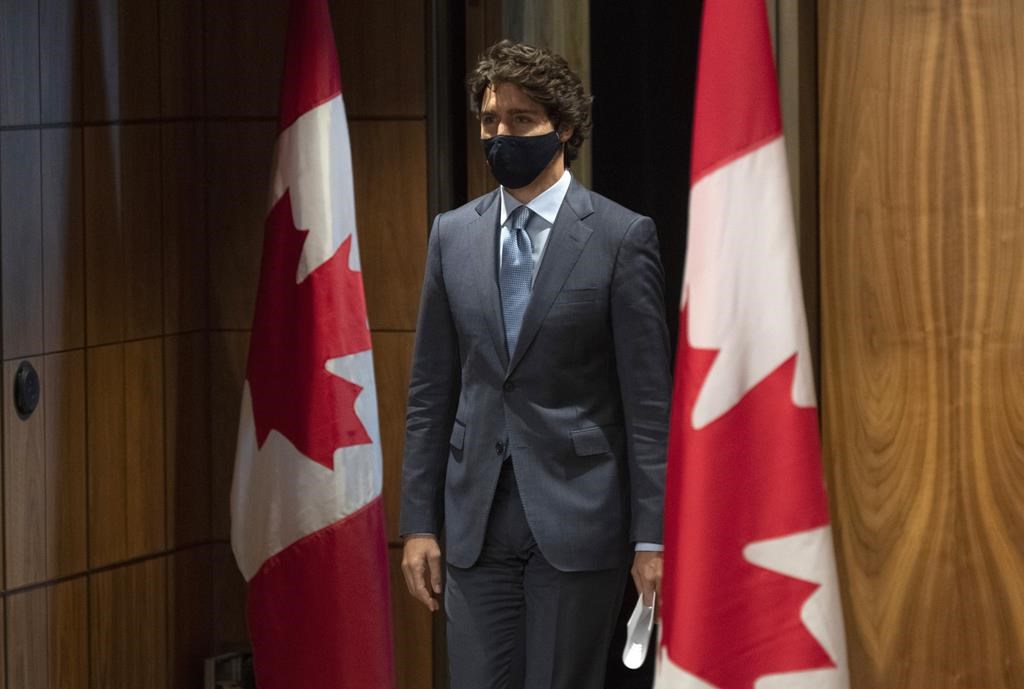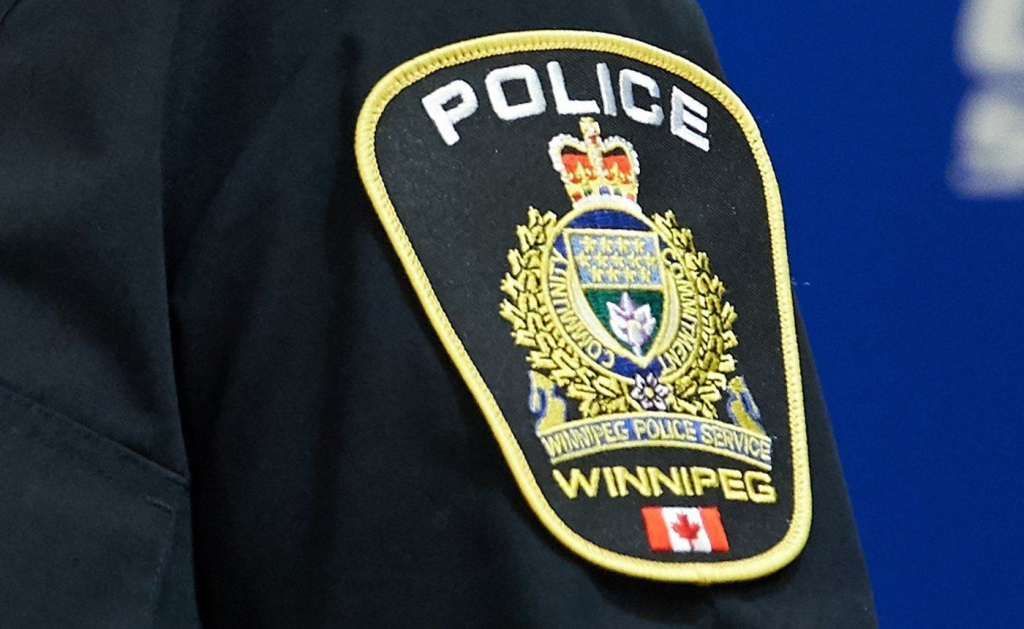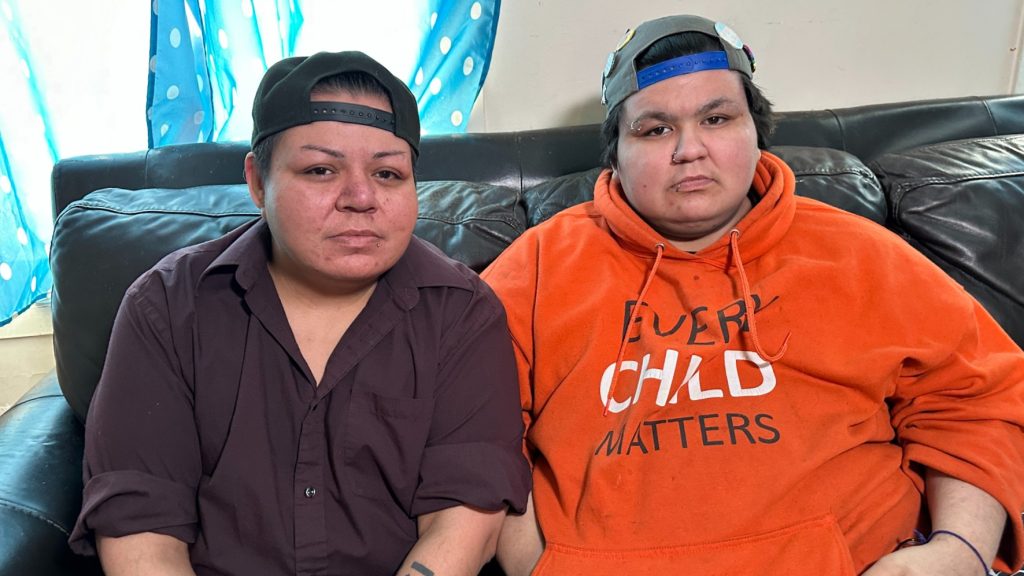PM urges Canadians to wear masks indoors at all times as winter approaches

Posted November 6, 2020 10:30 am.
Last Updated November 6, 2020 12:30 pm.
OTTAWA — As the COVID-19 situation continues to raise concerns, Prime Minister Justin Trudeau suggested on Friday that as winter approaches Canadians consider wearing a mask anytime they are indoors.
During a briefing, he pointed to record high new cases in B.C. and Saskatchewan and record-high deaths in Ontario.
Trudeau also said there is increasing evidence that aerosol spread is a vector of transmission and we need to wear masks and avoid crowded, enclosed spaces.
“We all have our reasons to keep each other safe, to follow public health advice. We need to do that. It’s particularly nice outside in many parts of the country this week, which means we’re still enjoying lots of fresh air. But winter is coming. And that means we’re going to have to get into more enclosed spaces, we’re not going to be able to open windows wide in rooms, ventilation is going to become much more important.” he said.
“I have, over recent days, taken to trying to wear a mask anytime I’m inside, including when I’m more than two metres distance from people, when I’m not actually speaking,” he added.
“This is an extra degree of protection, but it’s an extra onerous step that many of us are going to have to take on. But we all need to do what we can to slow and stop the spread of COVID- 19. Obviously, everyone’s situation is different, contexts are different, but using our best judgment and making those little sacrifices so that we don’t continue to see mounting losses and increase disruptions from spread of COVID-19,” he said.
READ ALSO:
-
Canada’s top doctor recommends three-layer masks to reduce spread of COVID-19
-
B.C. surpasses 400 daily COVID-19 cases for first time
-
COVID-19 hospitalizations and deaths may continue to rise in coming weeks: Tam
-
Federal leaders encourage COVID-19 safe Remembrance Day
“We’ve seen many of our allies in Europe have to go into severe lockdowns, imposed curfews. We’ve been able to avoid that in Canada so far right across the country during the second wave, because, in general, we have been acting quickly. And because the federal government has been there to provide support to individuals and businesses that allow public health authorities to go ahead and act quickly to prevent further spreads.”
Trudeau also said vaccines will hopefully be ready in the spring, but there’s a lot of work to do between now and then.
Long road ahead for vaccine
Canada Chief Public Health Officer Dr. Theresa Tam said the National Advisory Committee on Immunization provided preliminary guidance Tuesday on the populations that should be considered for early COVID-19 immunizations.
“While this preliminary guidance is helpful for planning, there is still a long road ahead. Clinical trials need to continue. Health Canada still needs to approve the vaccines, if they are deemed safe and effective, and we will be receiving additional advice on prioritization, based on the characteristics of each vaccine, once approved,” she said.
Today’s #COVID19 #Epidemiology in Canada Daily Update: https://t.co/2586g1wrHh pic.twitter.com/MrioSFeNeT
— Dr. Theresa Tam (@CPHO_Canada) November 6, 2020
Tam also suggested Health Canada is not considering national public health measures or recommendations.
“I think our role has been to provide guidance and recognize that the provinces and territories implement guidance, and they are taking into account their local epidemiology and their particular capacities and circumstances, so that’s how it actually works,” she said.
“If there are some extraordinary needs, there are different tools that the government, in fact, the prime minister and others can take,” she added.
Tam said Canadians have flattened the COVID-19 curve once, and given much more is known about the virus now, they, working with public health and government officials, can do it again.
“I think that’s the most effective and appropriate way of managing.”
‘Targeted approach’
Balance is also important, she added.
“So we don’t blanket cover the country with the same public health measures, but try to use a more targeted approach, and that is still currently the approach.”
In the meantime, Tam added, it is crucial to continue to layer on individual protections known to be effective keeping infection rates low. Earlier in the week, Tam appealed to Canadians to wear three-layer, non-medical masks with filters to limit transmission of COVID-19.
Friday she reiterated health and safety protocols, and suggested wearing a mask when spending time indoors with people from outside your immediate household, and avoid or limit time spent in closed, crowded spaces and close-contact situations where you can’t consistently maintain physical distancing.
Canada has recorded a total of 251,338 cases of COVID-19 to date, with more than 32,000 active.
Quebec reported 1,133 new cases of COVID-19 Friday, and 25 additional deaths associated with the novel coronavirus.
Ontario reported 1,003 new cases of COVID-19, and 14 new deaths.
B.C. surpassed 400 new daily COVID-19 cases for the first time on Thursday.








